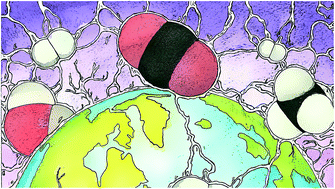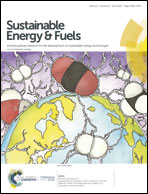Suppressing the formation of NOx and N2O in CO2/N2 dielectric barrier discharge plasma by adding CH4: scavenger chemistry at work†
Abstract
The need for carbon negative technologies led to the development of a wide array of novel CO2 conversion techniques. Most of them either rely on high temperatures or generate highly reactive O species, which can lead to the undesirable formation of NOx and N2O when the CO2 feeds contain N2. Here, we show that, for plasma-based CO2 conversion, adding a hydrogen source, as a chemical oxygen scavenger, can suppress their formation, in situ. This allows the use of low-cost N2 containing (industrial and direct air capture) feeds, rather than expensive purified CO2. To demonstrate this, we add CH4 to a dielectric barrier discharge plasma used for converting impure CO2. We find that when adding a stoichiometric amount of CH4, 82% less NO2 and 51% less NO are formed. An even higher reduction (96 and 63%) can be obtained when doubling this amount. However, in that case the excess radicals promote the formation of by-products, such as HCN, NH3 and CH3OH. Thus, we believe that by using an appropriate amount of chemical scavengers, we can use impure CO2 feeds, which would bring us closer to ‘real world’ conditions and implementation.



 Please wait while we load your content...
Please wait while we load your content...